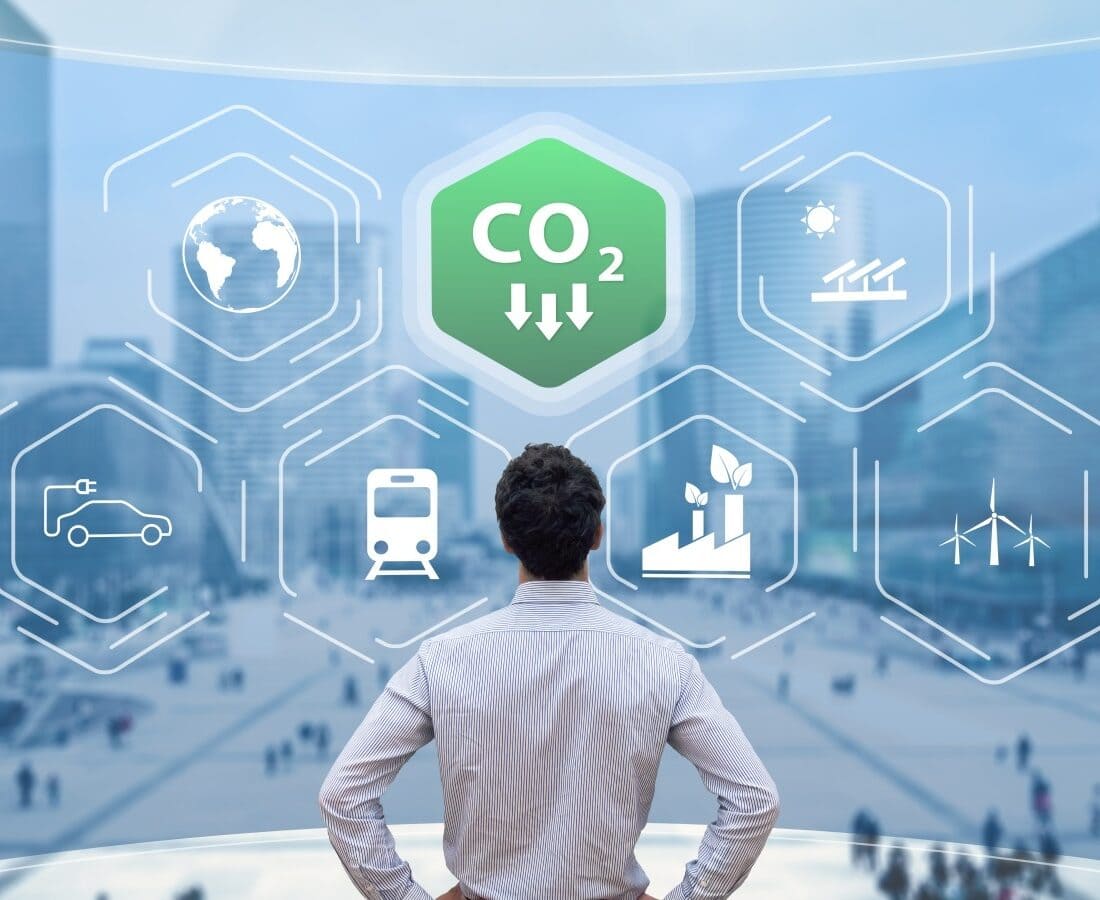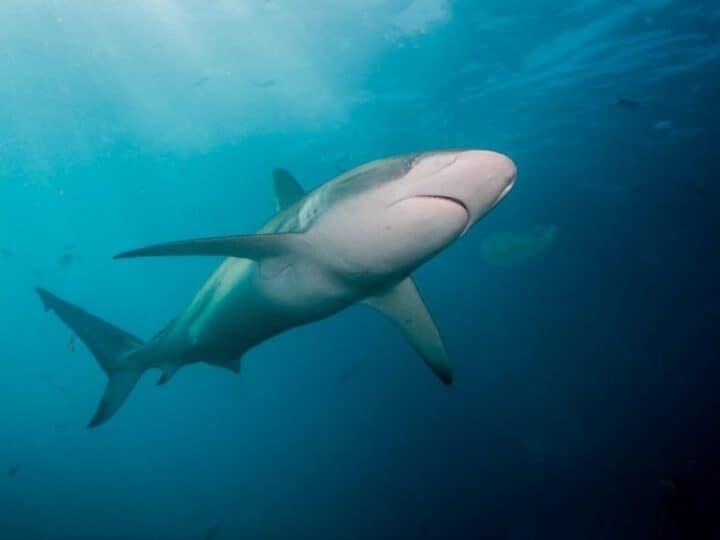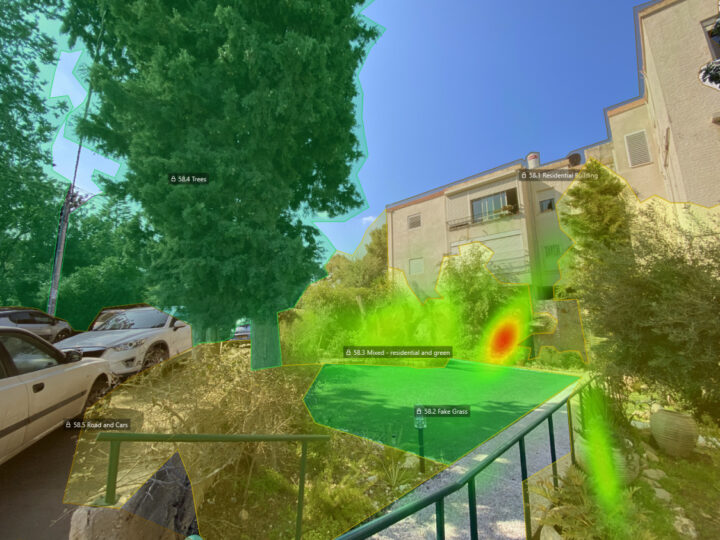Following on from our article on the role of carbon removal technologies in helping to stop climate change, ISRAEL21c spoke with leaders in the space to identify the most promising startups in the field in Israel. In alphabetical order.
Ayala Water & Ecology
Ayala CEO Eli Cohen received his master’s degree in material science, physics and thermodynamics. He headed up R&D at a high-tech company before realizing that he wanted to be a farmer.
Cohen bought land in the village of Zippori in northern Israel and began learning aquatic plant farming.
Now he’s back in the high-tech world, combining his interest in the environment with his tech smarts.
Ayala, now in business for 30 years, specializes in nature-based solutions for watershed management and wastewater treatments. Distinct from other water purification technologies, Ayala’s tech does not require energy, so there are zero carbon emissions. The biological components of Ayala’s system sequester carbon and transform it into carbon sinks.
Ayala’s purification systems use a combination of biotic and abiotic components, gravity, unique plants and substrates, microorganisms, energy from the sun, and verging internal hydraulic layouts.
Ayala Water & Ecology has implemented its tech in Israel, India, Europe and across hundreds of sites.
Groundwork BioAG
Groundwork BioAG is a world-leading producer of plant inoculants from mycorrhizal fungi.
The flagship Rootella product line, a scalable and verifiable natural solution for permanent carbon dioxide removal, draws down excess carbon back into the soil. Farmers using Rootella grow more nutrient-dense and resilient crops, save on fertilizer, and qualify for carbon credit revenue.
The Rootella Carbon Program, launched this year throughout the US midwest and midsouth, enables farmers to apply Rootella and earn revenue for the premium carbon credits generated via mycorrhizae in their croplands.
Groundwork BioAG has offices in five countries. Its products are currently regenerating 4.5 million acres of cropland across 17 countries including almost all of the world’s breadbaskets — the US, Canada, Brazil, Ukraine and India.
“Mycorrhizae have existed for over 400 million years and their colonization of land plants is correlated with a significant reduction of atmospheric CO2 . This process – mycorrhizal increase, carbon sequestration, and atmospheric CO2 decrease – paved the way for the conditions within which humanity evolved. Today, human development is reversing this process by destroying existing mycorrhizal networks, and atmospheric CO2 is rising again,” says Dan Grotsky, cofounder and chief growth officer.
“Therefore, if we restore mycorrhizal networks – alongside other nature-based carbon dioxide removal solutions — we can replenish the soil carbon stock and transform today’s vicious cycle into a virtuous one.”
CarbonBlue
CarbonBlue wants to bury excess atmospheric CO2 deep in the sea.
Carbon dioxide is 140 times more concentrated in seawater than it is in the air, Dan Deviri, CarbonBlue’s CEO, tells ISRAEL21c.
That is a problem, Deviri explains, because ocean water is already saturated with carbon, leading to ocean “acidification” and a less hospitable environment for shellfish and coral.
CarbonBlue’s technology brings CO2-saturated water into its reactors and outputs chemically identical but undersaturated water, which can then absorb more CO2.
CarbonBlue has a working prototype, partnerships and carbon credit sales. The company licenses or leases its tech to work with its customers’ existing infrastructure.
Deviri notes that CarbonBlue’s tech is “completely reversible and does not change the chemical or biological properties of the water or the environment, other than removing carbon from it.”
GigaBlue
GigaBlue has a similar mission to CarbonBlue — to store excess carbon in the oceans.
“There are already 38,000 gigatons of CO2 stored in the ocean,” cofounder Ori Shaashua says, “and there is room for much more.”
Shaashua notes that the carbon is initially “fixated” in phytoplankton as part of their photosynthesis process and then “sequestered” or stored in the sediment of the ocean.
GigaBlue uses a geo-targeted particle that stimulates phytoplankton growth for carbon fixation and a controlled gravity core for deep ocean sequestration.
The technology has currently been tested in a lab. GigaBlue aims to validate the process in the real world by the first quarter of 2024. Direct sales as well as partnerships will constitute the company’s business model.
Rewind
Rewind is similar to GigaBlue and CarbonBlue, with the goal to bury CO2 underwater, but specifically in the Black Sea.
Why there?
The Black Sea is the largest body of “anoxic water” on earth, two kilometers deep and located in the midst of Europe’s breadbasket, meaning there’s a high availability of “residue biomass” nearby.
“Anoxic water” refers to an area of sea — it could be fresh or groundwater — that’s been depleted of dissolved oxygen. Plants dissolve much more slowly in such conditions, allowing them to store carbon longer.
The lack of oxygen creates an excellent preservation environment for plants, preventing them from decomposing and releasing their carbon dioxide back into the atmosphere.
Nature already removes millions of tons of CO2 from the atmosphere when it washes away leaves, branches and organic matter into rivers and oceans. Rewind proposes to boost that process with technology.
“We look to nature because the best machine capturing carbon dioxide from the air today is plants,” Rewind CEO Ram Amar told ABC News. “We figured that if we take residual plants and throw them on the bottom of the Black Sea, they will be kept away from the air for thousands of years. That checks the box of permanence with a natural solution.”
Carbonade
Carbonade captures and converts excess CO2 from the atmosphere into products such as plastic, building materials, methanol, sustainable aviation fuel and detergents that would otherwise be created using fossil-made carbon.
Carbonade CEO Raanan Shelach tells ISRAEL21c that Carbonade is “inspired by what plants have been practicing for millions of years – taking air, water and energy generated by the sun and building something new.”
The technology, developed by Prof. Ronny Neumann at the Weizmann Institute of Science, uses electrochemistry to capture CO2 from the air and mix it with water and a novel catalyst. The catalyst generates a reaction that separates the carbon and oxygen molecules at a 40% lower cost than other technologies, Shelach says.
“I’ve seen how the climate has impacted our way of life and decided to take action,” Shelach says, recalling the landscape changes he’s observed from flying over the Middle East as an Israeli Air Force pilot.
Carbonade aims to have a prototype of its tech in 2024.
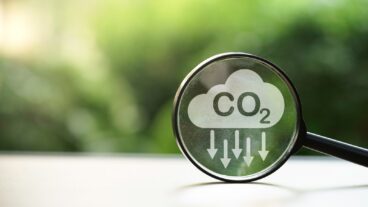
In the dystopian sci-fi film Snowpiercer, scientists attempting to reverse climate change inject a substance into the atmosphere. It’s intended to blunt the sun’s rays, reducing temperatures and wild weather events on Earth.
But the tech backfires and Earth freezes over. Eventually, everyone on the planet dies, except for those on the eponymous Snowpiercer, a futuristic train that circles the globe continually.
RepAir
Israeli serial entrepreneur Yehuda Borenstein is a cofounder of Carbonade as well as RepAir, which captures CO2 directly from the air through a selective membrane and sends clean air back into the atmosphere.
RepAir, which aims to have its first commercial facility set up in Iceland by 2025, uses a continuous electrochemical process powered by renewable energy.
The critical difference here is that RepAir’s process uses 70% less energy than existing direct air capture methods, and doesn’t require heat. That should make it exceptionally affordable to build, run and scale.
This flexible solution is designed to be easily integrated at any CO2 storage or utilization facility. Among RepAir’s investors are Shell and Equinor.
Bomvento
Wind turbines now serve a dual role by not only generating energy but also economically removing greenhouse gases at scale. Each 7 MWh turbine can eliminate up to 10,000 tons (CO2 equivalent) of greenhouse gases yearly, effectively doubling revenue potential through carbon credits.
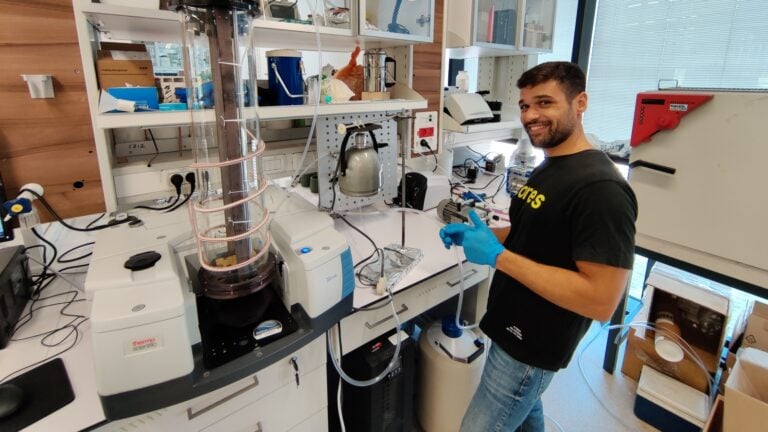
Bomvento, led by cofounder Yuri Tsitrinbaum, employs photocatalysis technology to convert N2O, a potent greenhouse gas, into eco-friendly nitrogen (N2) and oxygen (O2). They’re also working on a similar process for methane reduction.
In the R&D phase, Bomvento aims to license its tech through revenue-sharing with major wind energy firms. This enables wind turbines to tap into both compliance and voluntary carbon markets. The startup is now seeking $1 million in funding to showcase its potential, including development of a minimal viable product.
Tsitrinbaum, ex-CEO of Lumos Nigeria and Cote d’Ivoire, and former McKinsey strategist, emphasizes Bomvento’s mission: ‘It’s not a matter of ‘if,’ but ‘how’ and ‘when.’ Climate tech is pivotal in preserving biodiversity, peace, prosperity, and growth,” he tells ISRAEL21c.
High Hopes
Carbon is in the air. So, it makes sense that, to capture it, you have to get up to its level.
That’s the idea behind High Hopes, an Israeli carbon removal startup that uses hot air balloons to capture CO2 at high altitudes where the low temperatures make it possible to collect frozen carbon dioxide.
The lower the temperatures, the more efficient is the carbon capture with less energy required than if the process was undertaken closer to the ground. At very high altitudes, it can drop to minus-90 degrees Celsius, at which point the CO2 freezes into solid flakes, which can then be kept in high-pressure storage.
Moreover, the continuous strong winds present at high altitudes aid the CO2 separation process.
High Hopes calls the process HACC — “high-altitude carbon capture” — and believes its lower price will enable developing economies to play a larger role in combatting climate change.
Rplace
Rplace “reconstructs” wetlands and monitors their development. The company’s platform, now at the pre-seed stage, “collects, analyzes and processes data… then translates that into carbon certification, water standard regulation and useful information for future developments.”
Rplace, essentially, makes wetlands an option for the carbon credits market. It targets wastewater from treatment plants, which are responsible for around 3% of global greenhouse gas emissions. “Constructed wetlands” are an environmentally-friendly alternative to conventional wastewater treatment plants.
By 2030, Rplace intends to have removed 100 million tons of CO2.
Terrra
Like Rplace, Terrra (yes, with three “r”s) is deeply involved in wetlands restoration and rewilding, specifically in areas where wetlands once existed, like Israel’s Hula Valley.
Terrra enables wetlands to act as carbon sinks, so that nature “can heal itself.” It’s a fast-track solution to obtaining carbon offset credits, while keeping production and operation costs low.
While wetlands that have previously been drained for agriculture are the company’s main focus, Terrra says its platform can be “deployed in a variety of biomes.”
The company’s first project was conducted in conjunction with the Society for the Protection of Nature in Israel at Kfar Ruppin and Kibbutz Ma’agan Michael.
BlueGreen Water Technologies
BlueGreen Water Technologies began its startup journey with a mission to clean water of dangerous types of algae.
As the company was rolling out its tech, the team, led by CEO Eyal Harel, realized that algae — like Groundwork’s fungi — could also remove carbon from the atmosphere.
Micro-algae, such as the eponymous “blue-green algae” that BlueGreen has set out to eradicate — occur naturally in lakes and oceans across the globe. Unfortunately, algae can also go rogue, strangling ecosystems and producing toxins that harm plant, animal, and human life.
Founded in 2014, BlueGreen Water Technologies uses AI, data science and deep learning to devise “an optimal treatment plan” to keep algae populations under control. Tossing in a few BlueGreen pellets ensures water is cleaner and that it also sequesters carbon.
The company’s Lake Guard formulation predicts when and where undesirable algae blooms are likely to occur and can launch prompt, scalable and economical water treatment.
Carbon Twist
The discussion up to this point has been about removing carbon dioxide. But methane is an even more dangerous gas — it’s 86 times more potent than a CO2 molecule for a time period of 20 years. After CO2, it’s the most common greenhouse gas, accounting for up to 30% of global warming.
Methane is the butt of many climate change jokes — literally — as cow farts are a major source of the gas.
Carbon Twist uses a catalytic process to remove methane from the air. It can be used in cowsheds, coalmines, landfills or wherever gas may have leaked, including pipelines.
On an agricultural facility, a compact device is installed on the top of the cowshed. The device sucks in air, breaks down the methane, and directs the resulting molecules away.
The process has an additional benefit for the livestock: It improves the air quality in the shed.
Percepto
Percepto is an Israeli drone company. So, what is it doing on this list?
While Percepto’s original (and still its main) business model was to help utilities inspect their facilities after a hurricane or extreme weather event, there is a strong demand to use those same drones to track methane leaks in power utility infrastructure.
“Some of these companies can generate up to a million dollars an hour, so preventing downtime has the highest impact on a company’s return-on-investment,” Percepto CEO and cofounder Dor Abuhasira tells ISRAEL21c.
The World Bank estimates some 10% of power outages globally are due to hurricanes. During Hurricane Dorian in 2019, Florida Power & Light reported $274 million in damages, leaving 160,000 customers in the dark.
The Modi’in-based Percepto already provides six Percepto Sparrows – its “drone-in-a-box” technology — to five Florida Power & Light locations. Italy’s Enel gas and electricity utility is a client, as are Fortune 500 customers in 10 countries.
Percepto’s drones are equipped with high-quality thermal and RGB cameras, along with other sensors. The Sparrow has a flying time of about 40 minutes and can hover at a height of 130 feet to avoid power lines.
Airosphera by Airovation
Our final stop on the climate-tech startup map brings carbon removal to the home.
Airovation, which produces “superoxide radicals” in a lab setting, earlier this year launched a new division, Airosphera, to personalize that technology.
The superoxide radicals in question here are oxygen molecules containing an additional electron. Normally, oxygen has 12 electrons and is a very stable molecule. The additional electron makes it “radical,” meaning that it is no longer steady and thus seeks to bind with other molecules or to release that electron to other molecules.
“The superoxide manages to stop CO2 pollution by converting it through a synthetic photosynthesis-like process into oxygen and fertilizers for new vegetation,” CEO Marat Maayan tells ISRAEL21c.
Airovation’s clients are industrial facilities seeking to convert smokestack exhaust into clean air. Airosphera’s tech, unveiled at this year’s CES in Las Vegas, enables home air purifier manufacturers to add artificial intelligence-based technology to make smarter indoor filters.
The data the unit collects automatically modifies how the purifier works based on individual parameters. A Bluetooth-connected mobile phone app can be used to change the settings manually. You can set it so that two students sitting in the same study room get a different oxygen level based on their cognitive performance or sleepiness.
The first products with “Airosphera inside” are expected to hit the market by the end of 2024.
NOF
(Natural Offset Farming) in Shilat takes captured carbon dioxide from industrial plants (ammonia, oil/gas, power) and uses it to produce energy-efficient cooling energy for agricultural needs in a rapidly warming world. The company’s patented device, NOFcooling, does not need electricity.
Uses of NOFcooling include cooling water to the best temperature for irrigation, cooling plant roots, cooling greenhouses, cooling poultry and cattle pens, and extending shelf life to prevent postharvest losses.
The technology can enhance photosynthesis and mitigate pathogens. NOF, founded in 2022, is conducting a mini-pilot on a jasmine farm in India, together with BAIF Development Research Foundation.




